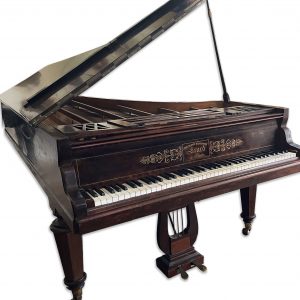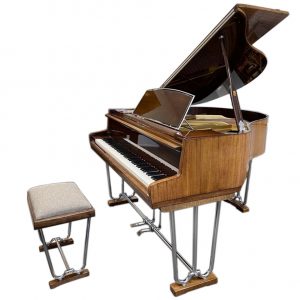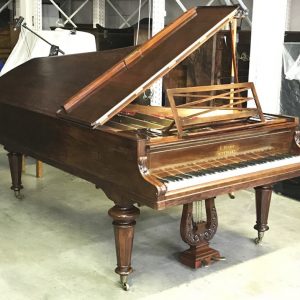Chinese Porcelain Tea Caddy 18th century.
unusual Tea Caddy from the 18th century is artistically sculpted using what is believed to be Cinnabar, mineral highly used in Chinese porcelains, sculpted peonies and leaves
Description
The Chinese have consumed tea for thousands of years. The earliest physical evidence known to date, found in 2016, comes from the mausoleum of Emperor Jing of Han in Xi’an, indicating that tea was drunk by Han Dynasty emperors as early as the 2nd century BC. The samples were identified as tea from the genus Camellia particularly via mass spectrometry and written records suggest that it may have been drunk earlier. People of the Han Dynasty used tea as medicine (though the first use of tea as a stimulant is unknown). China is considered to have the earliest records of tea consumption, with possible records dating back to the 10th century BC. Note however that the current word for tea in Chinese only came into use in the 8th century AD, there are therefore uncertainties as to whether the older words used are the same as tea. The word tu 荼 appears in Shijing and other ancient texts to signify a kind of “bitter vegetable” (苦菜), and it is possible that it referred to a number of different plants, such as sowthistle, chicory, or smartweed, including tea. In the Chronicles of Huayang, it was recorded that the Ba people in Sichuan presented tu to the Zhou king. The state of Ba and its neighbour Shu were later conquered by the Qin, and according to the 17th century scholar Gu Yanwu who wrote in Ri Zhi Lu (日知錄): “It was after the Qin had taken Shu that they learned how to drink tea.”
Chinese ceramics show a continuous development since pre-dynastic times and are one of the most significant forms of Chinese art and ceramics globally. The first pottery was made during the Palaeolithic era. Chinese ceramics range from construction materials such as bricks and tiles, to hand-built pottery vessels fired in bonfires or kilns, to the sophisticated Chinese porcelain wares made for the imperial court and for export. Porcelain is so identified with China that it is still called “china” in everyday English usage.
Most later Chinese ceramics, even of the finest quality, were made on an industrial scale, thus few names of individual potters were recorded. Many of the most important kiln workshops were owned by or reserved for the Emperor, and large quantities of ceramics were exported as diplomatic gifts or for trade from an early date, initially to East Asia and the Islamic world, and then from around the 16th century to Europe. Chinese ceramics have had an enormous influence on other ceramic traditions in these areas.
Increasingly over their long history, Chinese ceramics can be classified between those made for the imperial court, either to use or distribute, those made for a discriminating Chinese market, and those for popular Chinese markets or for export. Some types of wares were also made only or mainly for special uses such as burial in tombs, or for use on altars.
You must be logged in to post a review.












Reviews
There are no reviews yet.